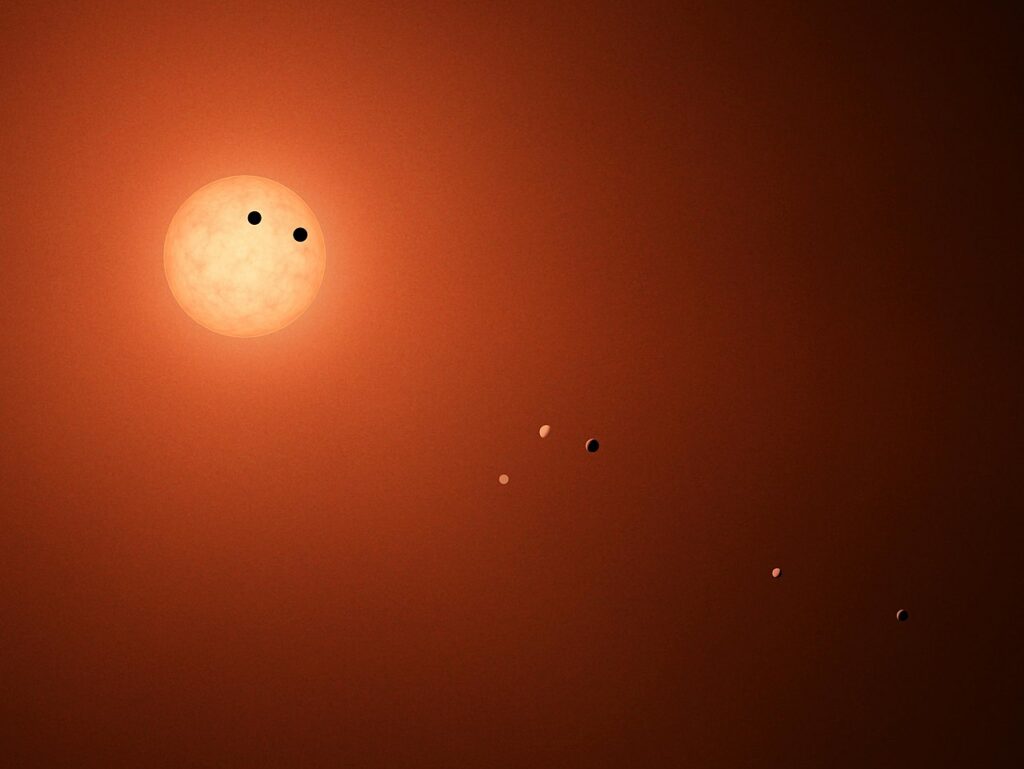Participants of the SETI project scanned the TRAPPIST-1 star system in search of alien radio transmissions. They failed to find any signals that could be of man-made origin.

Most searches for extraterrestrial civilizations are based on the assumption that aliens will make an active attempt to make their existence known and use something like beacons for this purpose. However, when it comes to random transmissions not intended for interstellar communications, the situation becomes much more complicated. Thus, the receivers used for the SETI program have a limit of sensitivity to minimum transmitter power beyond anything humanity is now inadvertently sending into space.
A group of SETI researchers decided to test one possible search strategy to find random signals using already available technology. It is based on the assumption that if there are multiple inhabited planets in a star system, we can record their conversations with each other when the transmitter and receiver are aligned with Earth. In such cases, signals can “leak” out of the system and be caught by our radio telescopes.

Astronomers chose the red dwarf TRAPPIST-1 as a target. It is located at a distance of 41 light-years from the Sun and is famous for the fact that seven rocky exoplanets orbit it. Orbits of three of them lie in the zone of habitability.
The ATA radio observatory, which recently received an upgrade, was used to search for alien transmissions. For 28 hours, the team scanned a wide range of frequencies in search of narrow-band signals that are considered possible signs of alien technology. After filtering through millions of potential signals, the researchers left about 11,000 candidates for detailed analysis. 2,264 of them were detected during the predicted exoplanet alignment window.
Subsequent analysis showed that none of these signals were of man-made origin. However, while the searches were unsuccessful, the scientists said they gained valuable search experience. It will be used when new, more powerful observatories are put into operation.
Earlier we told how residents of the American city of Lexington invited aliens from TRAPPIST-1 to visit Earth and drink bourbon.
According to SETI


